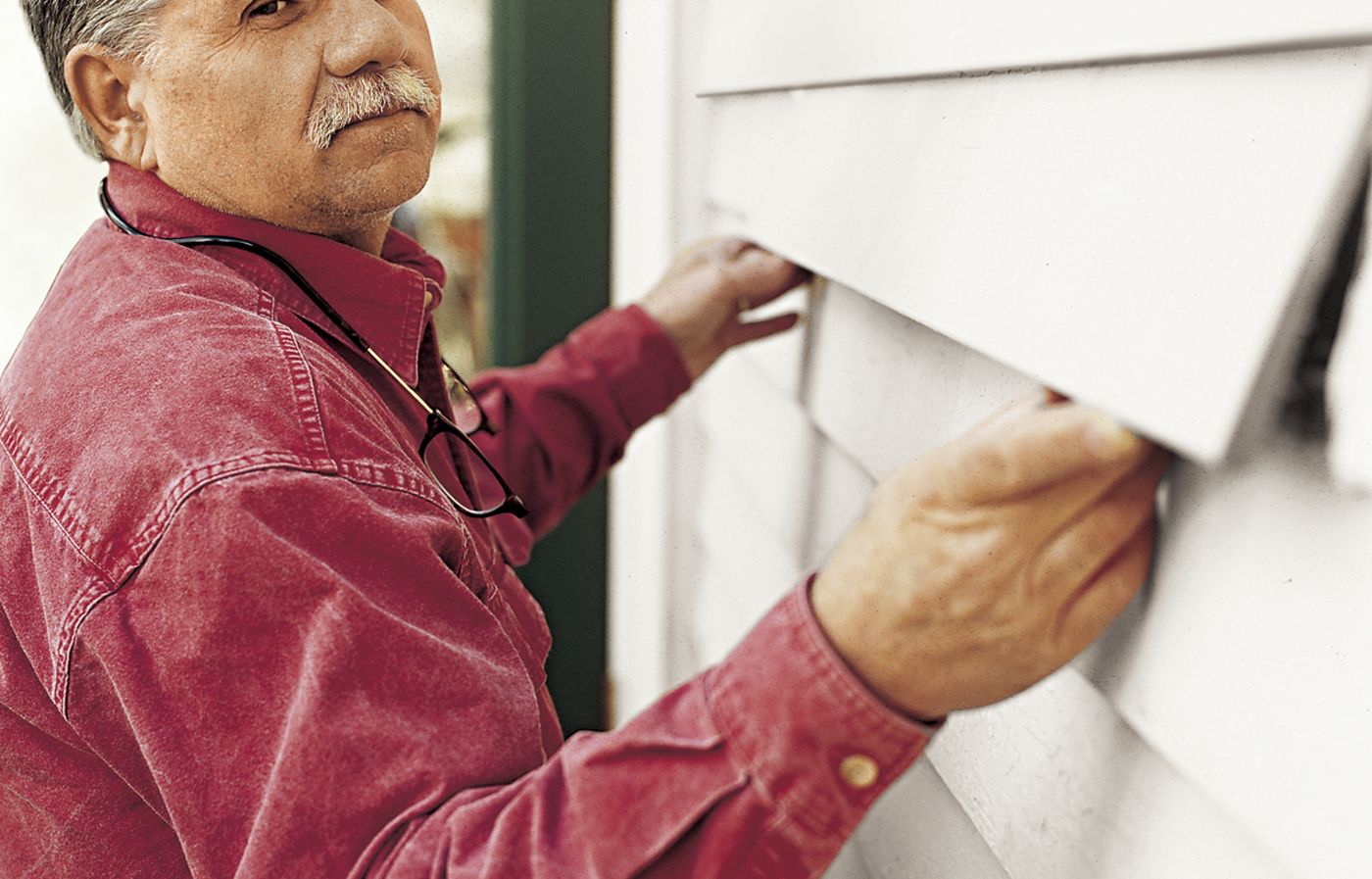Project details
Skill
Cost
Estimated Time
 Utility knife
Utility knife Flat pry bar
Flat pry bar Hammer
Hammer Hacksaw blade
Hacksaw blade Handsaw
Handsaw Caulk gun
Caulk gun
Whether it’s cracked, rotted, or the victim of a woodpecker’s bill, a damaged strip of wood siding is an open invitation for water to leak in and wreak havoc on a house. So when a piece needs fixing, it’s a task that merits a big red flag on the “To do” list.
Replacing a broken clapboard isn’t that difficult, but as This Old House general contractor Tom Silva shows on the next two pages, it’s a delicate process that takes patience and precision. “If you’re not careful, it’s easy to break the surrounding clapboards,” he says, “and then you’ll end up installing much more new siding than you intended.”
Power tools are out for this job: too much vibration. Siding repair is best done with hand tools—with one exception. “Forget the tape measure,” Tom says. Instead, you can size the replacement using the old clapboard as a template, a simple technique that virtually guarantees a tight fit on the first try.
Step 1
Overview
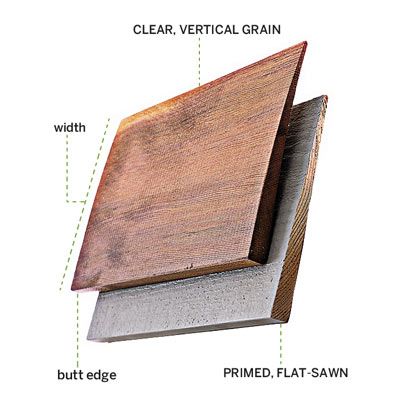
The clapboard you use for a patch should blend in seamlessly with your existing siding. Here’s how to make sure you have a patch that’s a perfect match before you begin.
Sizing: Measure the butt-edge thickness and the widths of the exposed faces of a few courses on the wall. Add an inch to the face width to account for the overlap of the piece above. (These measurements will be slightly smaller than the “nominal” dimensions that lumberyards and home centers use. A nominal ½x6 is actually 7/16 by 5½ inches.) If you’re not sure what size you need, ask the store to translate your measurements.
Texture: A rustic, rough-faced clapboard will look out of place in a field of smooth siding, or vice versa. Fortunately, most boards are smooth on one side and rough on the other.
Grade: Tom pays extra for clear (knot-free), vertical-grain (quartersawn) siding because it’s easier to paint and is more stable than cheaper, flat-sawn boards. It’s also easier to maintain because paint sticks to it longer, and the end joints remain sealed. But if C-VG doesn’t match the rest of the siding, then go with a grade that does.
The Nail You Need
While there are many varieties of clapboard to choose from, only one kind of nail will do: a stainless steel ring-shank nail for siding. Stainless steel doesn’t rust or stain the paint or leave black streaks on the wood, and the rings on the shank act like barbs, gripping the sides of the hole to prevent the nail from popping out.
For the best guarantee against pop-out, use 7d or 8d (2¼ or 2½ inches long) nails and drive them into the studs. You can get away with hammering 5d (1¾-inch) nails just into the sheathing as long as it’s ⅝-inch (or thicker) and made of plywood, OSB, or solid wood. To find out how thick your sheathing is, remove a piece of siding and poke a drill bit into a vertical seam between two sheathing pieces. Because these seams always land at a stud, measuring how far the bit goes in will tell you the sheathing’s thickness.
Step 2
Cut
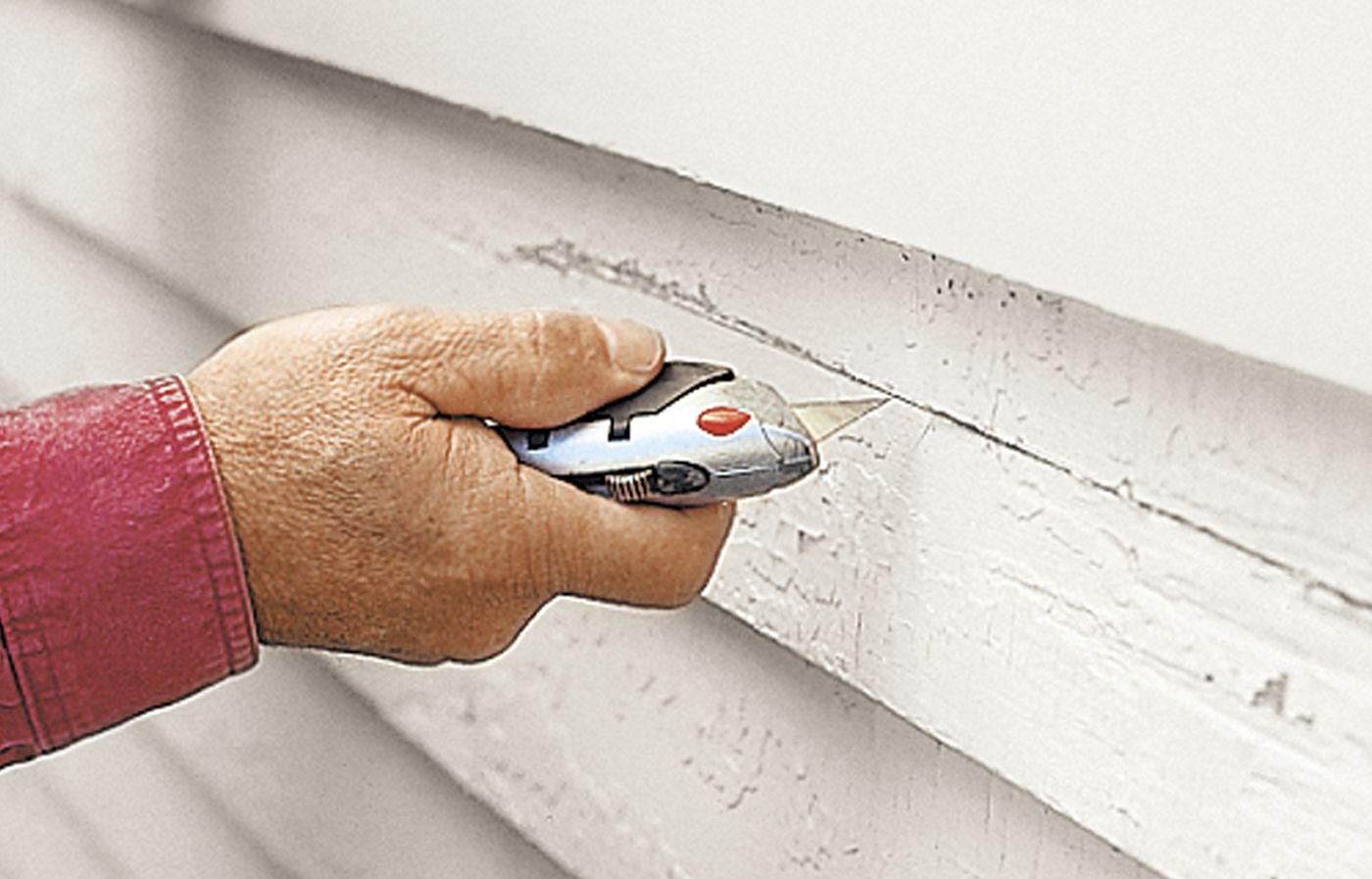
Using a utility knife, score the entire length of the damaged clapboard from end to end, about halfway up from its bottom, or butt, edge. Don’t slice all the way through the board, or you may cut the builder’s felt underneath.
Step 3
Pry
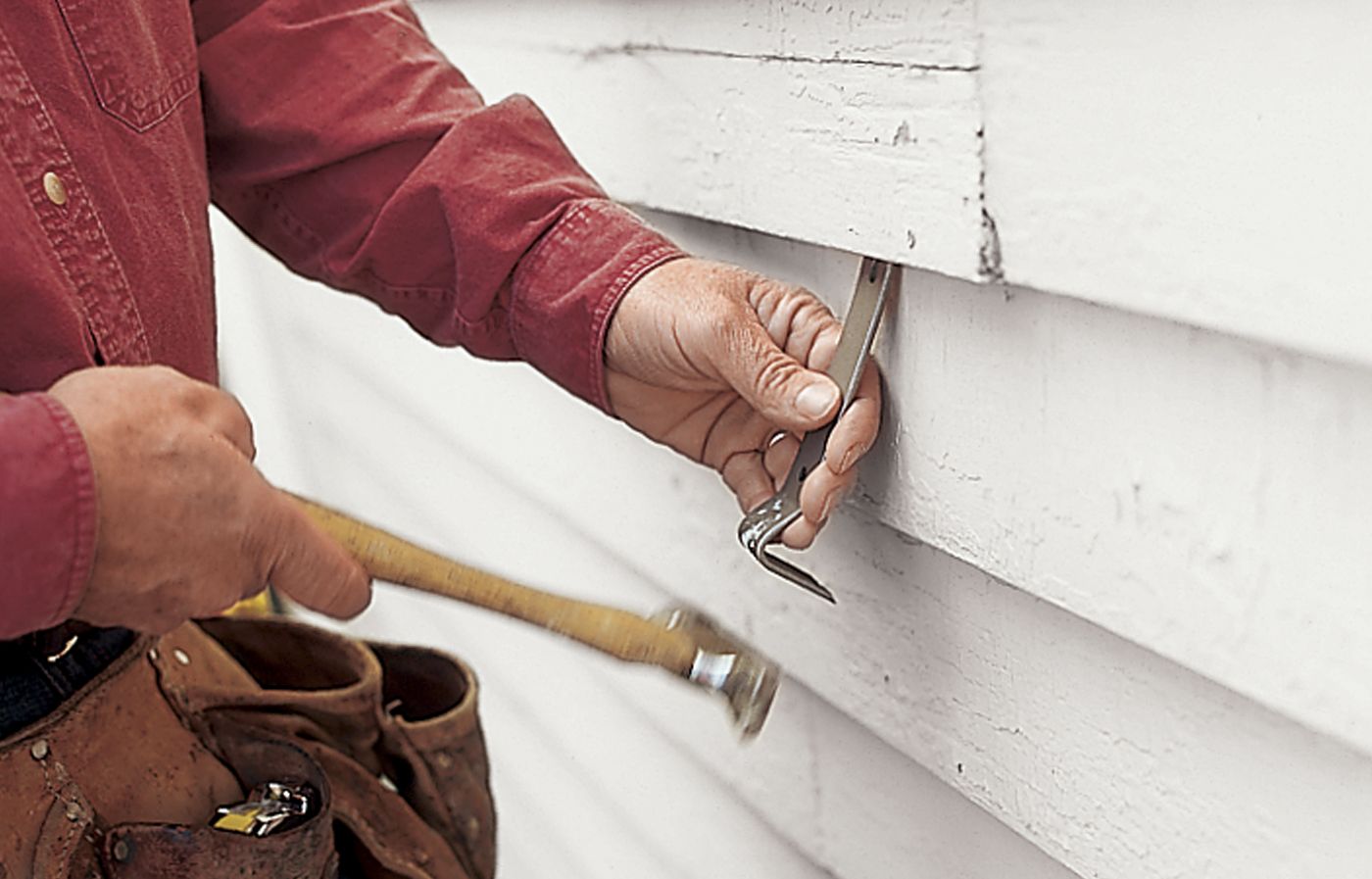
To break loose the lower half of the damaged piece, start at one end and gently tap a small pry bar underneath the butt edge, next to a nail. Pull the bar toward you, don’t push it, so you don’t mar or crack the neighboring clapboards.
Step 4
Snap
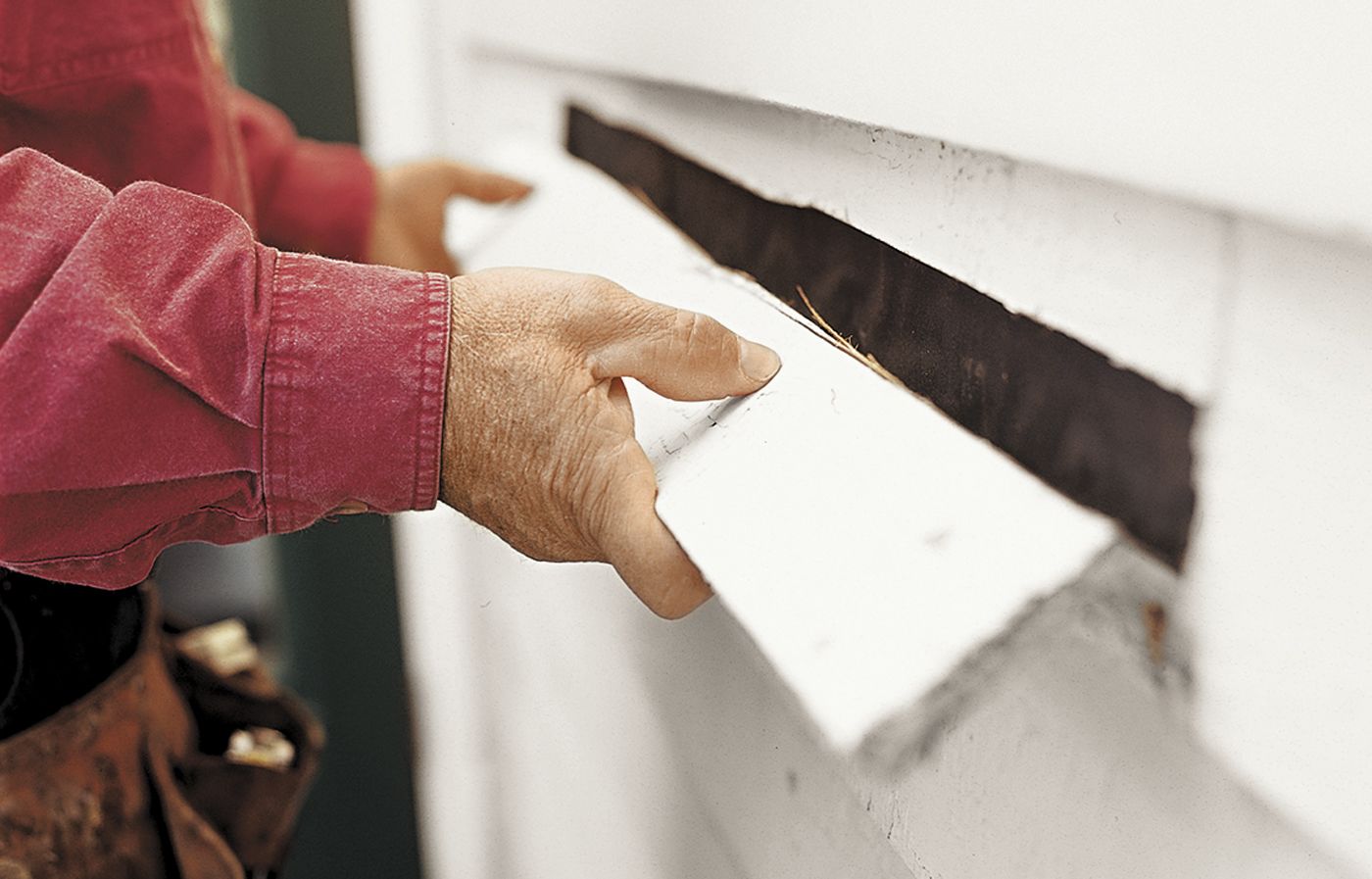
Work the pry bar along the butt edge until the lower half breaks off, preferably in one length. (It may take more than one pass.) If this piece remains intact, save it as a template for sizing the replacement. Leave the upper piece in place for now. Thump the exposed sheathing to see if it’s sound. If not, cut out and patch any soft spots before continuing.
Step 5
Remove the Bottom Nails
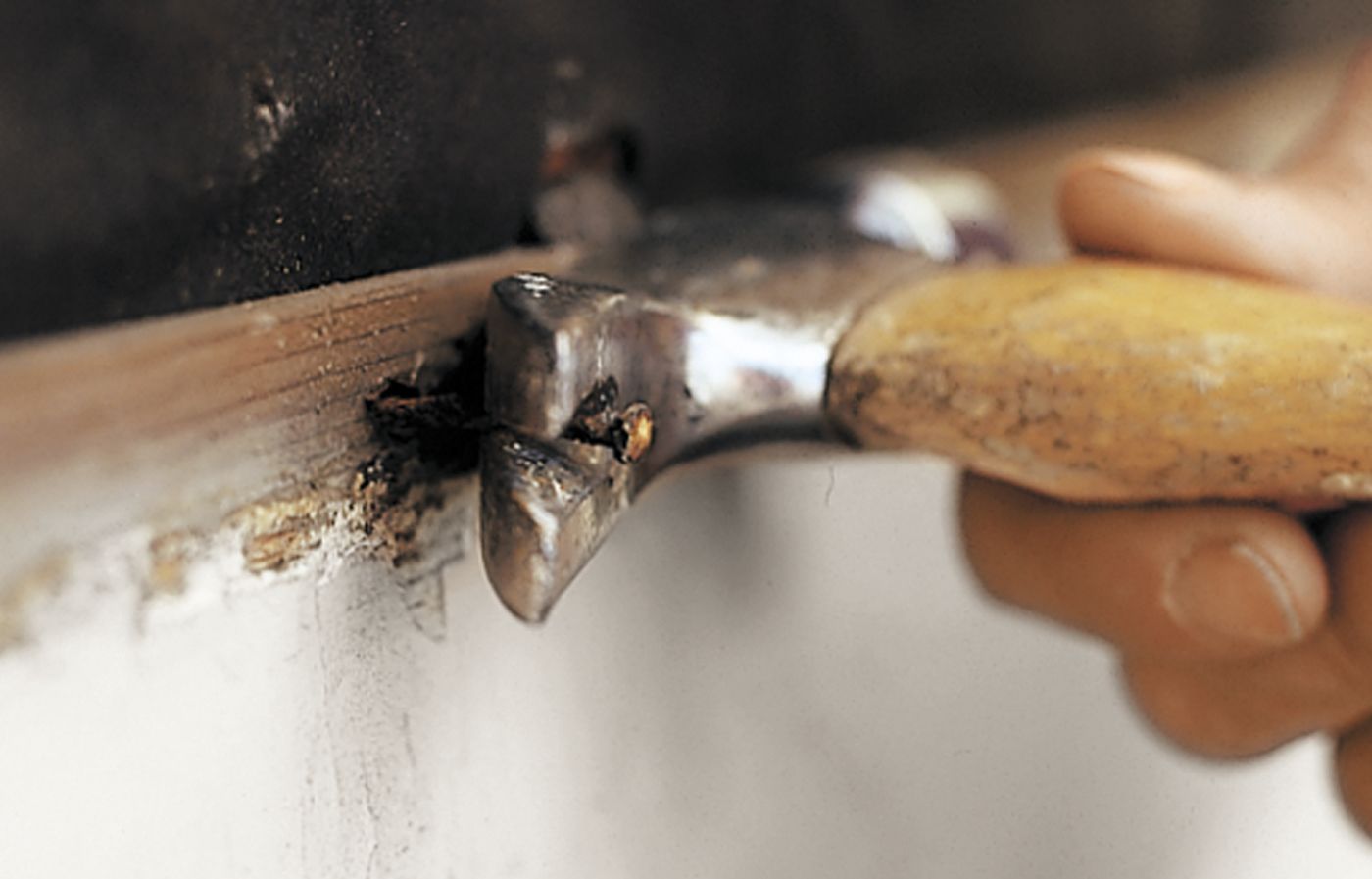
Use a hammer claw or pry bar to pull any of the butt-edge nails that remain embedded in the wall. As you pull each nail, keep the hammer head or pry bar horizontal to avoid cracking the siding below.
Step 6
Pop the Top Nails
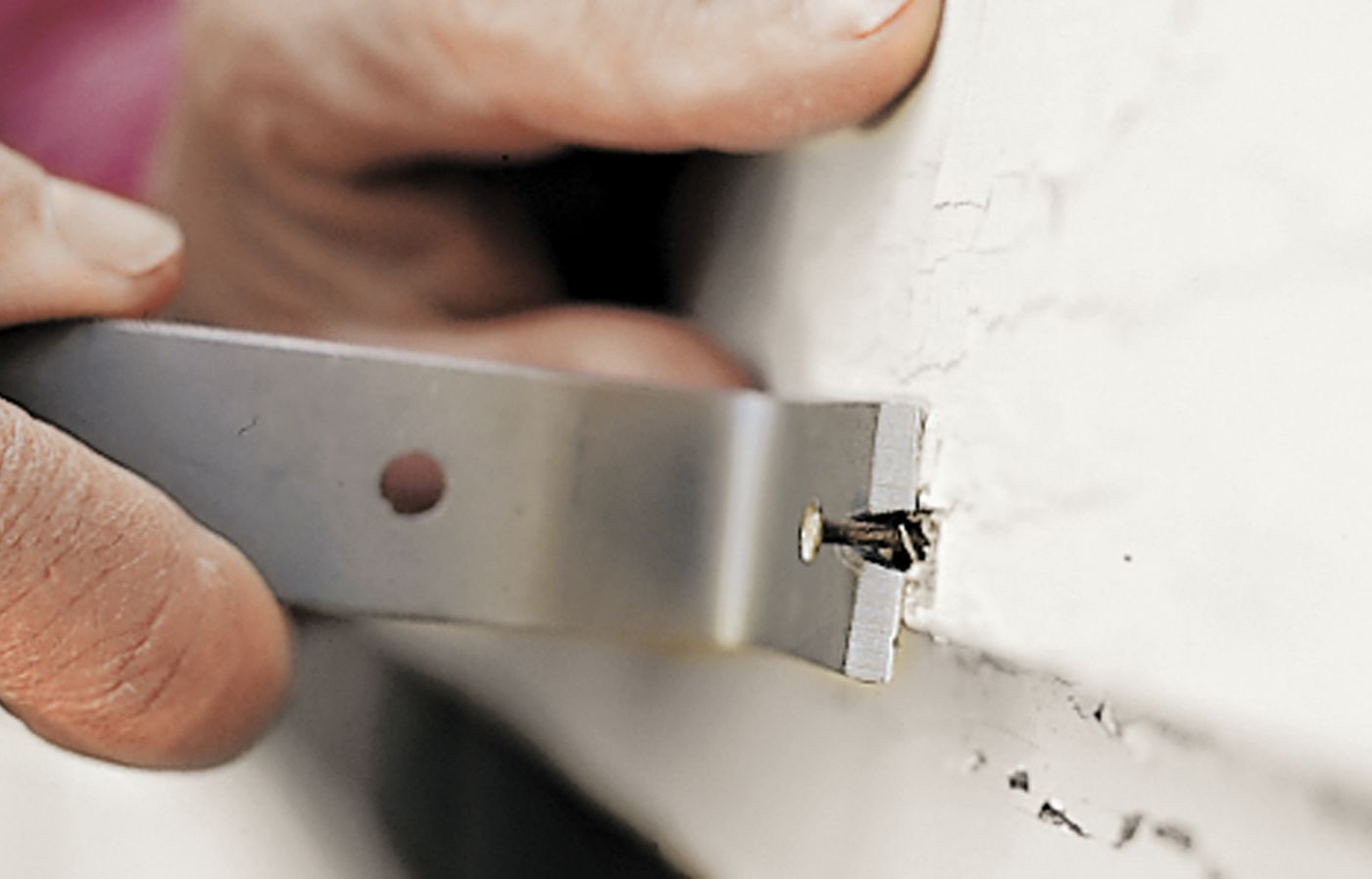
The butt-edge nails in the siding above the patch also need to come out. Tap the pry bar up under the undamaged siding at each nail shaft, then push the bar gently. With luck, the nails will pull out a bit so that when you tap the board back the nailheads will pop out just enough to get the pry bar under them. The top half of the damaged piece will fall out when all these nails are pulled.
Step 7
Cut the Stubborn Nails
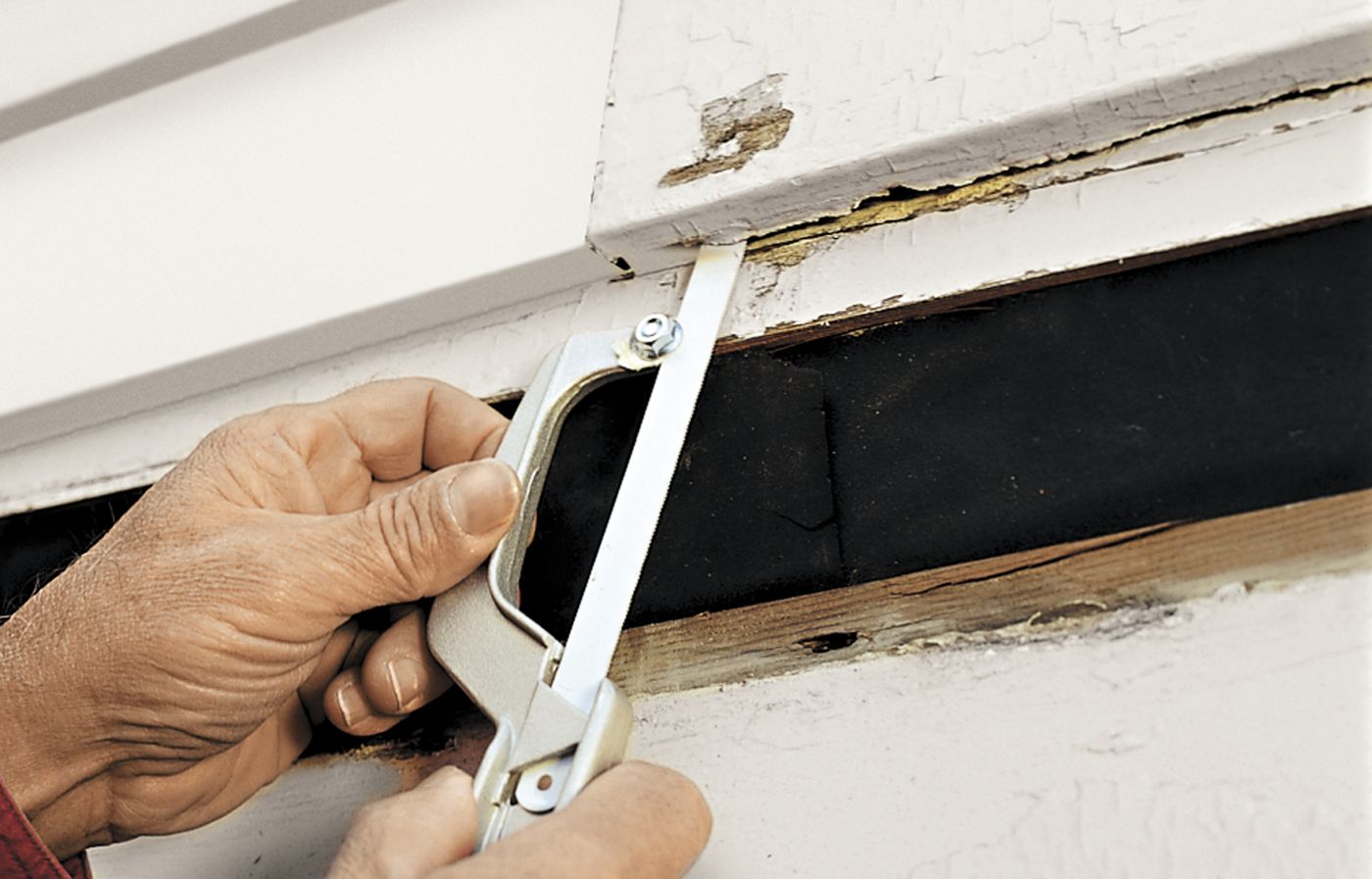
If the top nails won’t budge, slip a hacksaw blade under the siding and cut them flush with the sheathing. Orient the blade’s teeth to cut on the push stroke to reduce vibration and the risk of cracking the wood.
Step 8
Mark and Cut
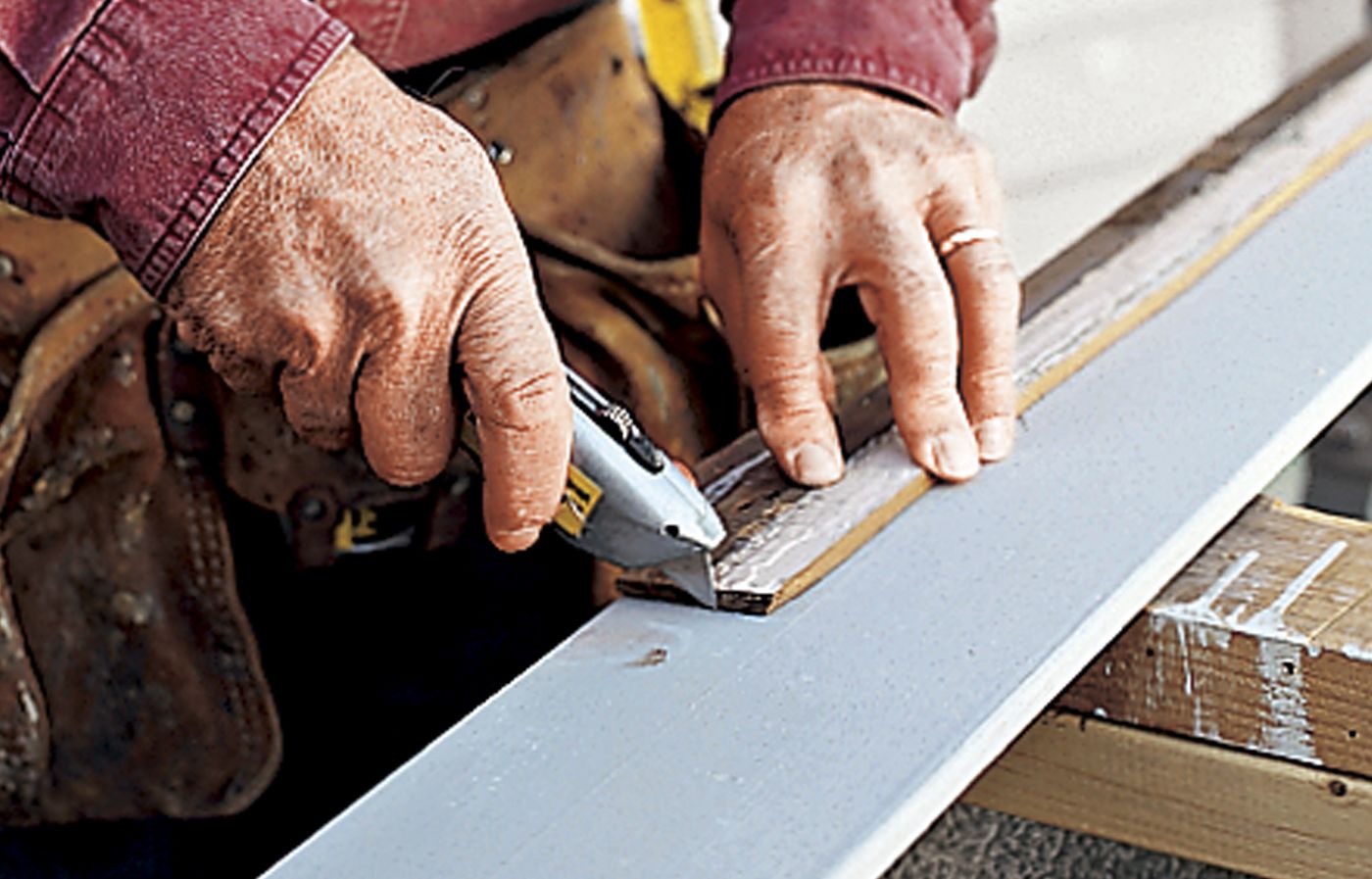
Place a full-length piece of the damaged siding on the face of the replacement. Line up the ends, and, using the old piece as a guide, mark the new clapboard with a utility knife. Score the cut line with the utility knife, guided by a square. (Scoring prevents the wood from chipping when you cut it.) With a handsaw, cut the new piece of siding on the waste side of the line. Angle the blade slightly to cut a bevel toward the side that will be against the house. This leaves a little extra space for caulk.
Step 9
Back-Caulk the Joints
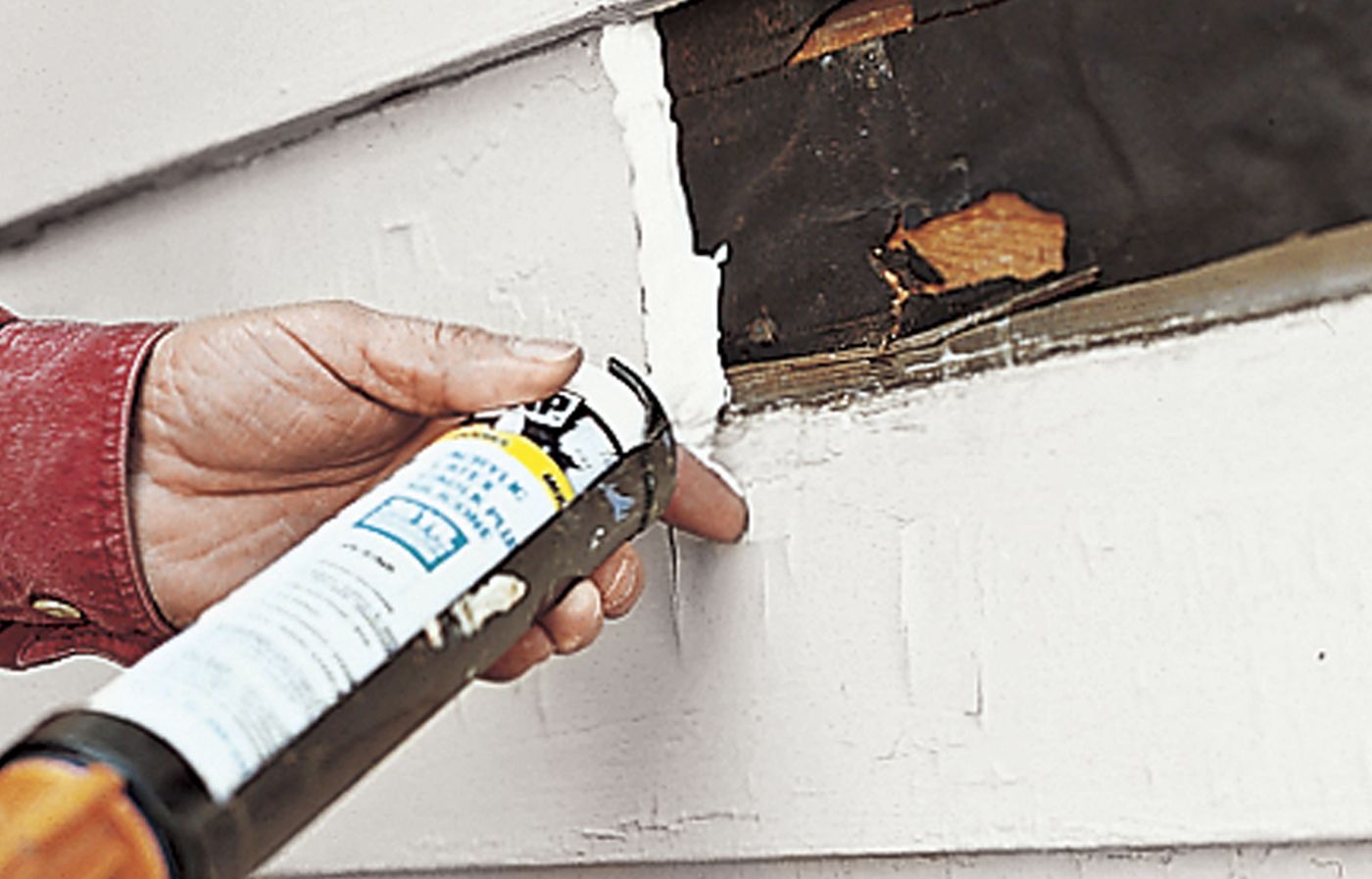
Lay a thick bead of caulk on both ends of the space where the new board will go. The bead should cover the end grain of the neighboring clapboard and the gap between its back side and the sheathing. In this application, Tom favors a paintable acrylic latex caulk.
Step 10
Fasten the New Piece
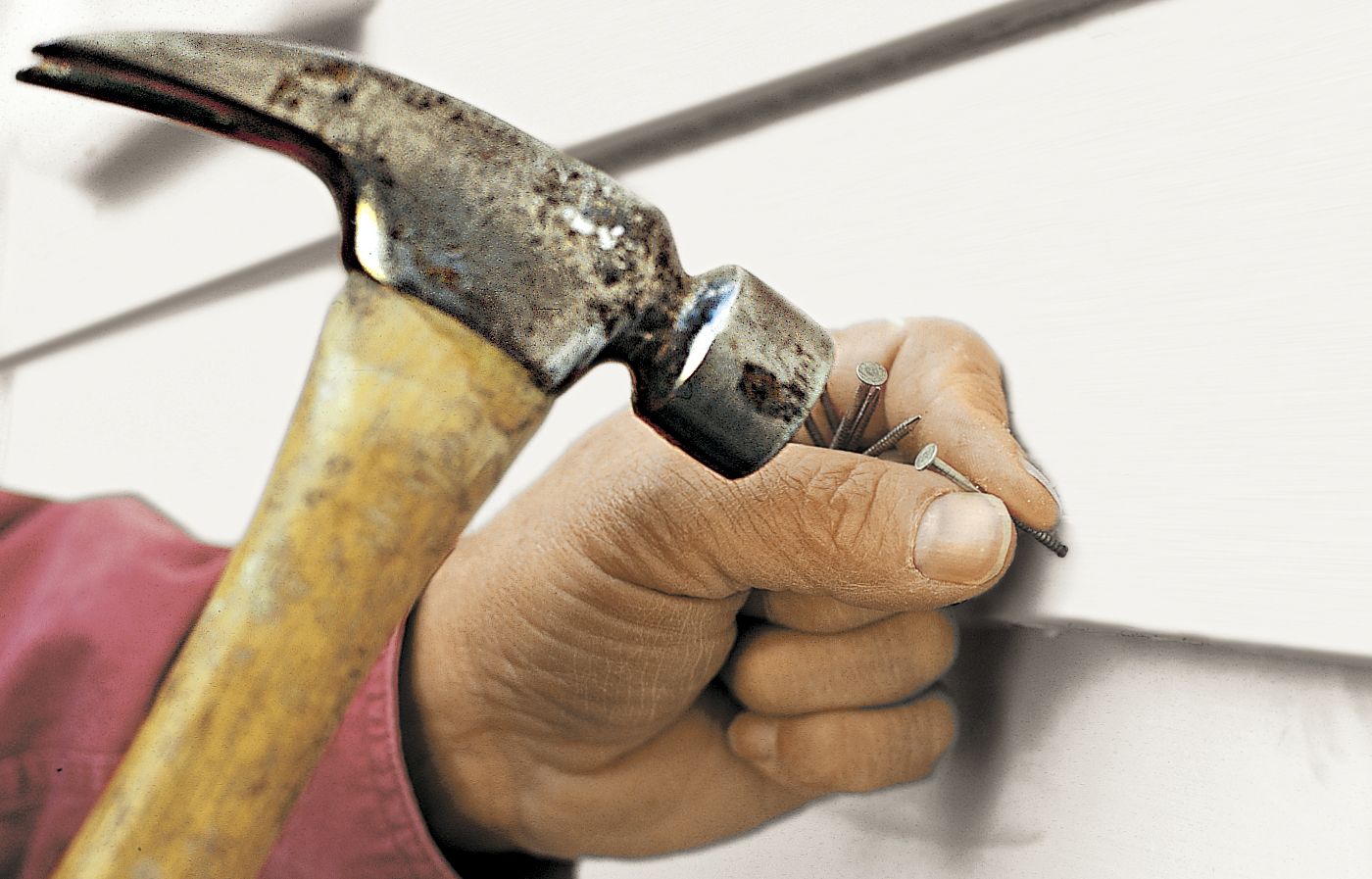
Push the thin edge of the new clapboard up at least an inch underneath the boards above, then line up its butt edge flush with its neighbors’. Start nailing at the ends; each nail should be about ¾ inch up from the butt edge and line up vertically with those in other clapboards (to prevent splits, keep nails at least 1½ inches from the end joint). Drive each nail in at a slight angle so it doesn’t land in an old nail hole in the sheathing. Pound nailheads flush with the face of the clapboard; ease up on the last couple of hits so you don’t dent the wood. Do the same to the old boards above the replacement (left). Finish by dabbing caulk into the nail holes and wiping away any caulk that oozes from the joint. The new piece is now ready for paint.
